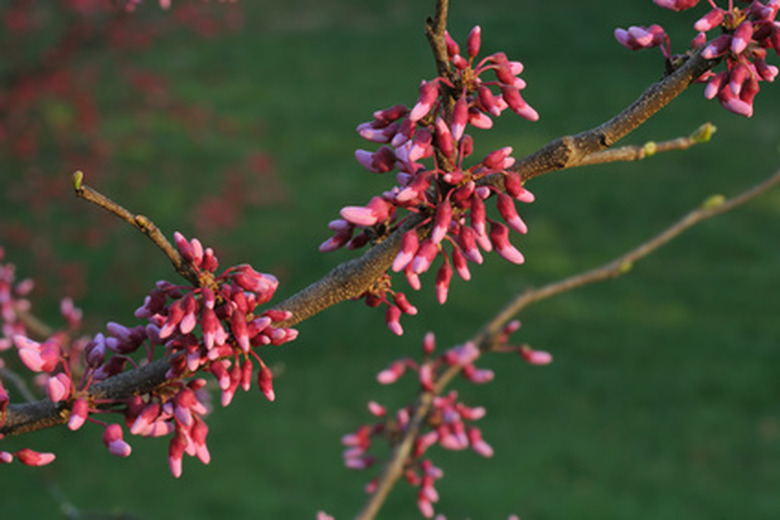How To Transplant A Redbud Tree
Things Needed
- Sharp spade
- Mulch
The redbud tree (Cercis canadensis) is known as an understory tree, meaning that it grows in the wild under the canopy of larger trees. The redbud is native to Florida and the eastern portion of the United States and is hardy to USDA zones 4 to 9. Eventually reaching a height of 30 feet, the redbud grows relatively quickly, about one foot or more per year.
Primarily used as an ornamental in the home landscape, the redbud tree bursts into pink blooms in the spring. In the fall, there is a second show with bright yellow foliage that will fall to the ground prior to the tree's winter dormancy.
Transplanting any tree can be a challenge for both the tree and the gardener. Thankfully, the redbud tree transplants well and, if care is taken, will thrive in its new location.
- The redbud tree (Cercis canadensis) is known as an understory tree, meaning that it grows in the wild under the canopy of larger trees.
Step 1
Move your tree in the spring, after the ground thaws.
Step 2
Water the redbud tree three days prior to transplanting.
Step 3
Mark the tree on the trunk so that you can orient it in the same direction in its new location, if desired.
Step 4
Dig a trench, 24 inches deep, completely around the tree. Use the spade to sever all but the main roots of the tree.
Step 5
Dig down under the major roots of the tree and, working your way around the rootball, loosen it from the soil. Also remove the soil surrounding the rootball. Agriculturists at North Dakota State University suggest taking 12 inches of soil for every one inch of trunk diameter.
- Move your tree in the spring, after the ground thaws.
- Dig down under the major roots of the tree and, working your way around the rootball, loosen it from the soil.
Step 6
Dig a hole three times the width of the rootball and the same depth at which the tree had been growing. Use the spade or a gardening hoe to scrape the sides of the hole, loosening the soil for better root penetration.
Step 7
Fill the hole with water and allow it to drain.
Step 8
Place the roots of the tree in the planting hole and backfill with soil. Tamp lightly around the base of the tree to ensure that it has adequate contact with the soil.
Step 9
Water the tree until the water puddles at the base. Water again when the top 4 inches of soil is dry.
- Dig a hole three times the width of the rootball and the same depth at which the tree had been growing.
- Place the roots of the tree in the planting hole and backfill with soil.
Step 10
Spread a 3-inch layer of mulch at the base of the tree, 3 inches away from the bark, 2 feet in all directions.
